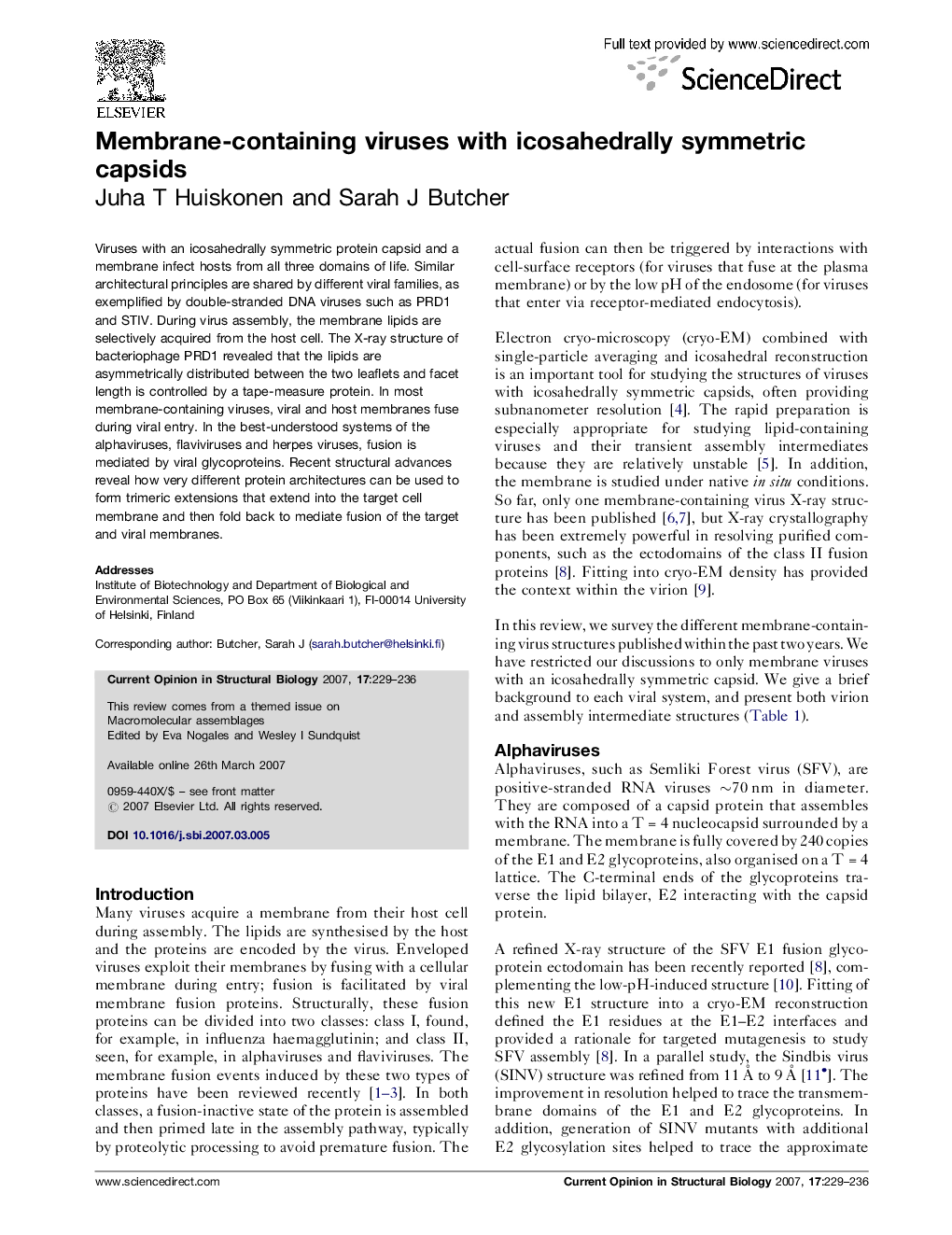| Article ID | Journal | Published Year | Pages | File Type |
|---|---|---|---|---|
| 1979811 | Current Opinion in Structural Biology | 2007 | 8 Pages |
Abstract
Viruses with an icosahedrally symmetric protein capsid and a membrane infect hosts from all three domains of life. Similar architectural principles are shared by different viral families, as exemplified by double-stranded DNA viruses such as PRD1 and STIV. During virus assembly, the membrane lipids are selectively acquired from the host cell. The X-ray structure of bacteriophage PRD1 revealed that the lipids are asymmetrically distributed between the two leaflets and facet length is controlled by a tape-measure protein. In most membrane-containing viruses, viral and host membranes fuse during viral entry. In the best-understood systems of the alphaviruses, flaviviruses and herpes viruses, fusion is mediated by viral glycoproteins. Recent structural advances reveal how very different protein architectures can be used to form trimeric extensions that extend into the target cell membrane and then fold back to mediate fusion of the target and viral membranes.
Related Topics
Life Sciences
Biochemistry, Genetics and Molecular Biology
Biochemistry
Authors
Juha T Huiskonen, Sarah J Butcher,
